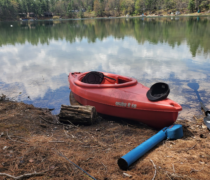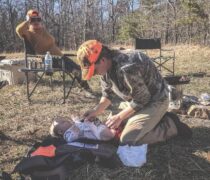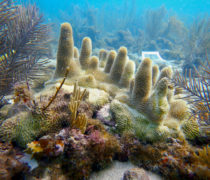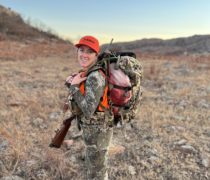Sixty years later and the Arctic Wildlife Refuge Still Needs Permanent Protections
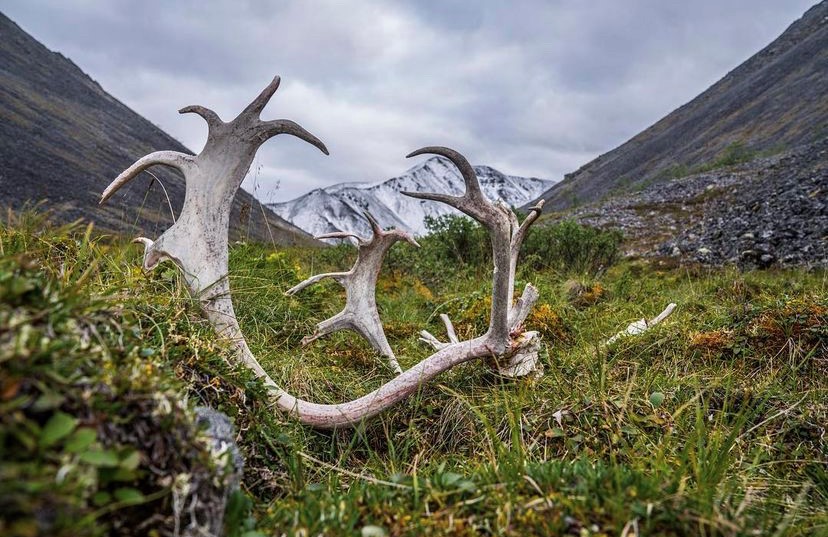
Photo by Alexis Bonogofsky
The Arctic is a region of extremes: extreme cold, extreme seasonal changes in daylight, and extreme winds. It sits at the top of the world, covered in sea ice—a seemingly unwelcome place for life. Yet the Arctic is actually teeming with wildlife. The coastal plain provides critical habitat for species like caribou, moose, bear, over 100 species of birds and 36 species of fish.
In June of this year, the Biden administration suspended activities related to the implementation of the Coastal Plain Oil and Gas Leasing Program in the Arctic National Wildlife Refuge pending completion of a comprehensive analysis under the National Environmental Policy Act (NEPA). Sec. Haaland also ordered a review of all aspects of the Coastal Plain Oil and Gas Leasing Program. However, to stop the current leases and permanently protect the pristine landscapes and incredible wildlife of the Arctic National Wildliife Refuge an act of Congress is required.
The Arctic Wildlife Refuge was created over 60 years ago to conserve habitat. Now, this sporting paradise is threatened by newly proposed oil and gas development. There is still time to act: urge your member of Congress to take action to protect the Arctic Wildlife Refuge from development for today and generations to come.
There is still time to protect this hunter’s paradise. Click the image below and take action.
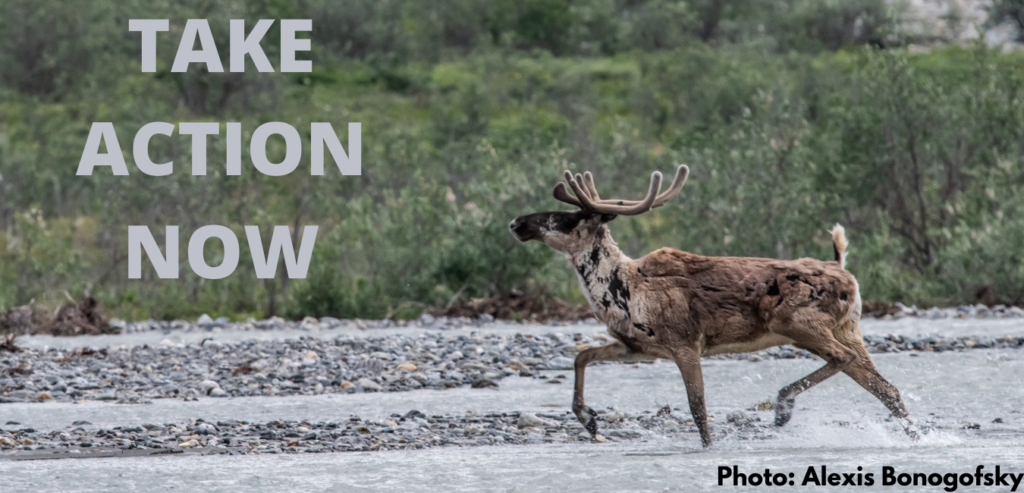
To learn more, check out this NWF Outdoors Podcast: “Artic Dreams” with Thor Tingey co-founder and owner of Alpacka Rafts.
The Arctic region covers much of Earth’s northern pole. The outer edge of the Arctic—which includes areas of Alaska, Canada, Greenland, and Russia—is made up of glaciers and tundra (treeless plains with frozen ground called permafrost). The central part of the Arctic (around the North Pole) is surrounded with large areas of sea ice.
Because of its polar location and the tilt of the Earth, the Arctic does not have the normal seasons that we are used to in the continental United States. An Arctic winter has days without sunlight, and the summer has days where the sun never sets (which is why it’s called the “land of the midnight sun”).
Throughout the year, temperatures can span a wide range. Average lows reach -40 degrees Fahrenheit in the winter and average highs reach 50 degrees Fahrenheit in the summer. A short growing season, permafrost, and long, dark winters of extreme cold and strong winds mean the Arctic is nearly treeless and only small plants can grow.
People
Although the Arctic is gaining popularity worldwide as a tourism and wildlife-watching destination, the region has always been vital to the identity, culture, and survival of its indigenous people. Tribes, such as the Gwich’in people of northeast Alaska and Canada’s northern Yukon and Northwest Territories, depend on the migratory caribou herds and the Arctic fisheries for food. The Yu’pik, Iñupiat, and Athabascan are also native groups to Alaska’s Arctic region. To adapt to the harsh climate, they developed warm dwellings and protective clothing. Many Arctic people now live with modern homes and appliances, however, there’s still a desire to pass on traditional knowledge and skills—such as hunting, fishing, herding, and native languages—to younger generations.
Wildlife
The Arctic is a unique ecosystem with a complex food web made up of organisms adapted to its extreme conditions. It is one of the most biologically productive ecosystems in the world, supporting many large fisheries and huge populations of migratory birds that come to the Arctic in the summer to breed.
Arctic wildlife have special adaptations that enable them to survive in their icy and changeable environment. Arctic foxes, polar bears, and caribou have hollow hair that traps air, providing them with insulation. Polar bears also have black skin to soak up as much of the sun’s rays as possible. Their fur is almost transparent, but appears white due to the reflection of sunlight. Other animals change color with the seasons to blend in with the changing tundra ground cover, like arctic foxes and ptarmigans that go from brown in summer to white in winter. Some fish that live in or under the ice have antifreeze compounds in their blood, while seals, whales, and walruses have a thick layer of fat, called blubber, that helps insulate them from the cold. Migratory birds use the Arctic to feed, nest, and raise their young. Many of these birds migrate to and from all 50 states and across six continents.
A large portion of the Arctic region includes the Arctic Ocean, which is home to an amazing array of wildlife, including endangered bowhead whales, endangered polar bears, beluga whales, endangered ringed seals, and Pacific walruses.
America’s Arctic includes the 19.6-million-acre Arctic National Wildlife Refuge. Located in the northeast corner of Alaska, this protected area is home to more than 200 bird species, which migrate to the refuge to breed in the summer. As many as 300,000 snow geese visit the coastal plain each fall to feed on the tundra. Other wildlife travelers on the Arctic Refuge include the 130,000-member porcupine caribou herd. Each spring, the herd migrates more than 1,400 miles (2,200 kilometers) across Canada and Alaska to calve in the refuge’s coastal plain. It’s estimated that an individual caribou may travel more than 3,000 miles (4,800 kilometers) over the course of a single year.
Most of northwestern Alaska consists of the 23-million-acre National Petroleum Reserve-Alaska (NPRA), the largest single tract of public land in the country. The Indiana-sized reserve provides critical habitat for an incredible array of migratory waterfowl that use the four major U.S. flyways to reach all 50 states in addition to many other countries. Canada geese, tundra swans, white-fronted geese, pintail ducks, and brant are among the hundreds of species of migratory birds that nest, feed, and molt in the NPRA each year. The reserve is also home to spectacular terrestrial and marine mammals, including grizzly bears, polar bears, caribou, wolves, and wolverines, as well as beluga whales, bowhead whales, walruses, and several species of seals. The 490,000-animal Western Arctic caribou herd is the state’s largest, and the Teshekpuk Lake caribou herd, numbering about 67,000 animals, is a primary source of subsistence for thousands of Alaska Native residents.
Oil and Gas Development
The Arctic contains abundant oil and gas reserves underneath its icy exterior. While exploring and extracting these natural resources is both challenging and expensive, further development is likely to continue due to improvements in technology and shifting energy policies in Arctic countries. Alaska is home to several reserves of oil and gas, some of which are already being developed, while others remain untapped.
The National Petroleum Reserve-Alaska (NPRA) is managed by the Bureau of Land Management for both the protection of high fish and wildlife values and development of oil and gas. The National Wildlife Federation is working to protect the key habitats that support the remarkable fish and wildlife that flourish in the reserve. Thanks to this work, the Bureau of Land Management finalized a management plan that takes a balanced approach to identify the most important wildlife habitat while providing for oil and gas development where it can be done responsibly.
However, government pressures to open more of the Arctic to oil and gas development threatens the wildlife and people who live there. Oil and gas companies have consistently pressured politicians to open the coastal plain of the Arctic National Wildlife Refuge to drilling—which would put the diverse array of wildlife that live in this largest refuge in the United States at risk.
The stated mission of the Arctic National Wildlife Refuge is to “preserve unique wildlife, wilderness and recreational values; to conserve caribou herds, polar bears, grizzly bears, muskox, Dall sheep, wolves, wolverines, snow geese, peregrine falcons, other migratory birds, Dolly Varden, and grayling; to provide opportunities for subsistence uses; and to ensure necessary water quantity and quality.” Only Congress can designate an area as wilderness, so it is up to our elected officials in the Senate and House of Representatives to pass a bill to permanently protect this sensitive landscape for future generations.
Artemis is working to stop Arctic drilling. You can to. Take Action now.
Sources
Arctic Centre, University of Lapland
National Snow and Ice Data Center
U.S. Fish & Wildlife Service



